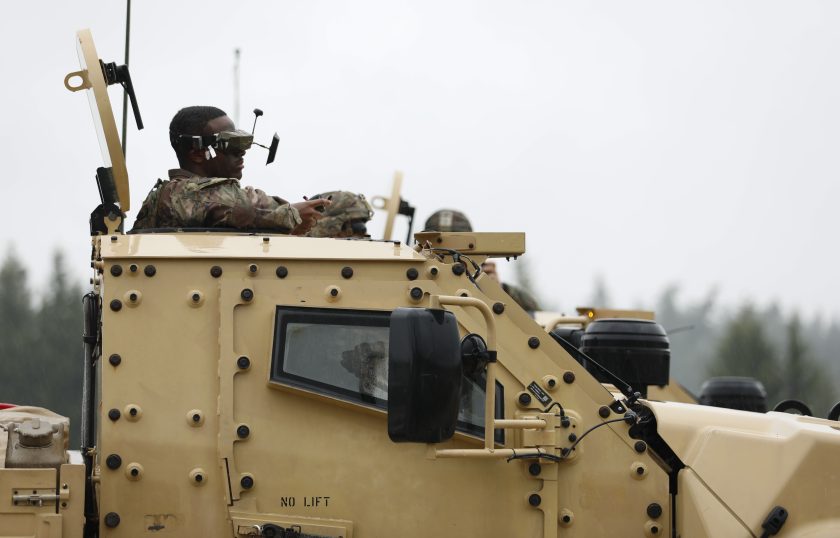The US Army has shared lessons learned from the Project Flytrap counter-uncrewed aerial systems (C-UAS) exercises during a media round table on July 30.
“[C-UAS] are essential to success on the modern battlefield,” said Lt. Gen. Charles Costanza, commanding general of V Corps. “US and allied forces must rapidly transform to the very real threat of unmanned drones by testing, adjusting and ultimately integrating the best C-UAS platforms in the world to protect our forces. Project Flytrap is a key component of V Corps’ transformation strategy.”
Project Flytrap 4.0 runs from July 27-31, 2025, at Bemowo Piskie Training Area, near Ełk, Poland. It is the final iteration of the C-UAS training events where soldiers from the US Army’s 2nd Cavalry Regiment and those from the 1st Royal Yorkshire Regiment, United Kingdom, test new C-UAS capabilities in combined exercises in order to develop and inform the future of anti-drone tactics and technologies.
More than 40 organizations, 400 representatives across industries, and allies and partners from four different countries including U.K., Poland and Australia, participated.
The first phase of Project Flytrap began in March and was launched to identify and test C-UAS solutions. This included considering lessons learned from the war in Ukraine. The second phase included installing these systems into various platforms within the US and UK formations. The third phase focused on conducting squad and platoon-level C-UAS exercises. Theories and best practices were further developed through real-world data. The fourth and last iteration concludes today, July 31 and has implemented battalion-level operations, with defensive and offensive operations around the clock.
Infantry soldiers took eight-hour courses over three days next to industry experts, learning to build almost 300 UAS with about a dozen models, including fibre optic and ‘jam-resistant’ drones, and how to counter them in the field.
Industry partners went out in the field and worked side-by-side with the soldiers, to fix issues such as battery drainage and equipment compatibility across allied platforms.
“There’s no one system or one solution to counter-UAS,” said Col. Donald Neal, Jr., regimental commander, 2nd Calvary Regiment, Grafenwoehr, Germany. “The counter-UAS capability we’ll have in the future is going to have to be an integrated, multi-system solution.”
The layered effect during Flytrap included a Stryker infantry formation, soldiers wearing technology with radio frequency detect and defeat capability to jam UAS, soldiers with M4s to shoot down enemy drones and soldiers who were manning the drones from the other side.
“At each echelon, you need the ability to handle that type of data on the systems we use to communicate with,” Neal said. “You have two options: you have the ability to do assault kills, which means you’re altering the flight path without a projectile in the air that shoots it out of the air. Or a hard kill, which means you’re altering the flight path with projectiles. So, it’s neutralised or destroyed.”
Col. Matt Davis, transformation chief and exercise director of V Corps, Project Flytrap, said using diversified drones helped with the layering effects. “If we flew the fiber optics, the RF detect systems we were using, they weren’t going to detect them,” he said. “We had to rely on acoustics or an optical, for example.”
For more information
Image: US Army photo by Spc. Josefina Garcia




